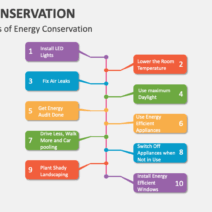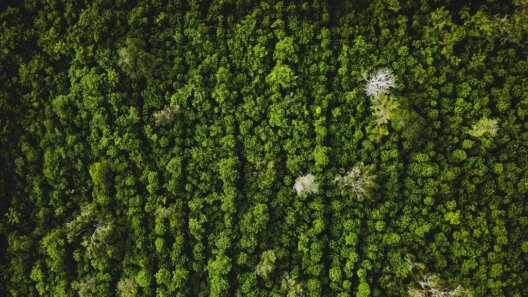Have you ever pondered the majestic role trees play in combatting climate change? It’s almost as if they are nature’s very own lungs, tirelessly exhaling the oxygen we depend on while intaking carbon dioxide—a potent greenhouse gas. This intriguing relationship between trees and carbon levels in the atmosphere is but one facet of how these silent giants act as a lifeline for our planet. As global warming accelerates, understanding the multifaceted role of trees becomes increasingly essential.
To truly appreciate how trees mitigate the devastating effects of global warming, one must first delve into the complex interactions between carbon dioxide and the Earth’s atmosphere. Trees sequester carbon dioxide through the process of photosynthesis, effectively trapping carbon in their trunks, branches, and roots. This sequestration helps lessen the concentration of greenhouse gases in the atmosphere, a principal driver of climate change. Just imagine: a mature oak tree can absorb as much as 48 pounds of carbon dioxide annually, demonstrating the impressive capacity of arboreal guardians.
But the contributions of trees extend far beyond mere carbon storage. They also play a pivotal role in regulating temperature and maintaining local climates. By providing shade and releasing moisture into the air through a process known as transpiration, trees create microclimates that can cool urban areas, ultimately reducing the urban heat island effect. This phenomenon illustrates a stark challenge we face as cities expand and population densities increase. Urban planning that incorporates more green spaces could significantly alleviate temperature spikes while simultaneously enhancing the natural ecosystem.
Picture a bustling metropolis filled with concrete and asphalt, heating up under relentless sunlight. Woodland enclaves, even small ones, can act as refuges, offering a cooling respite amidst the thermal assault. Incorporating trees into concrete jungles does not only shield us from heat but also fights against the air pollution that exacerbates global warming. Through their natural filtration systems, trees absorb harmful particulates and gaseous pollutants, improving air quality while enhancing their carbon absorption capabilities.
However, as climate change continues to escalate, trees themselves face unprecedented challenges. With rising temperatures, shifts in rainfall patterns, and increased occurrences of plants pests and diseases, tree populations are vulnerable to stressors that can compromise their health and efficiency. It presents a daunting question: how can we protect our ancient allies in this battle against climate change? Without careful stewardship, we may jeopardize the very systems that provide us with vital ecological services.
Interestingly, the biodiversity found within forest ecosystems enhances their resilience to climate change. Diverse forests—those with a wide variety of tree species—are better equipped to adapt to changing conditions. The intricate relationships between different species can bolster the ecosystem’s overall health, fostering a dynamic interplay of roots, canopies, and life below the soil. This relationship invites further inquiry: how can society encourage such biodiversity while simultaneously promoting reforestation and habitat restoration?
Another dimension of trees as a lifeline involves their role in soil conservation and water management. Healthy forests stabilize soil, preventing erosion that can lead to degradation of land and water resources. The root systems intricately weave through the ground, creating a structure that retains moisture and enhances water infiltration. This is critical in an era where water scarcity looms as a potential crisis exacerbated by climate change. Have we considered the importance of preserving and expanding forested areas in our efforts to sustainably manage water resources? Trees are not mere ornaments in landscapes; they are frontline defenders against soil erosion and water loss.
Moreover, trees can also act as gateways to education and community engagement regarding environmental stewardship. Community tree-planting initiatives foster a sense of responsibility towards nature and shared investment in the health of the planet. These endeavors help cultivate a culture of sustainability and environmental consciousness. It encourages individuals of all ages to connect with nature while gaining insights into the broader impacts of local actions on global challenges. In fostering ecological literacy, communities can work together to bolster both local environments and the fight against climate change.
The urgency for immediate action to support tree conservation and afforestation initiatives cannot be overstated. With humanity’s increasing footprint on the planet, the call to protect, plant, and propagate is louder than ever. Organizations, governments, and local communities must collaborate to formulate strategies prioritizing tree preservation and restoration efforts. Following the example of innovative urban forestry programs, cities can integrate green infrastructure into their development plans, allowing trees to flourish in harmony with urban life.
In contemplating the myriad benefits trees confer, consider the question: What legacy do we wish to leave for future generations? The health of our planet hinges on the choices we make today. Each tree planted is a step towards a more sustainable future, a testament to our commitment to curtailing climate change. Standing tall amidst life’s challenges, trees indeed serve as a vital lifeline for our planet, ingrained in the fabric of our existence. Their preservation is not merely an environmental concern; it is a collective responsibility that calls for action—a challenge we must rise to.
In conclusion, as we navigate the complexities of climate change, let us not forget that trees are more than mere components of our ecosystem. They are indispensable allies in the fight against global warming, with roles encompassing carbon sequestration, climate regulation, soil conservation, and community empowerment. With collective efforts to protect and restore trees, we can foster a thriving planet for generations to come, ensuring that nature’s lifeline continues to flourish.





